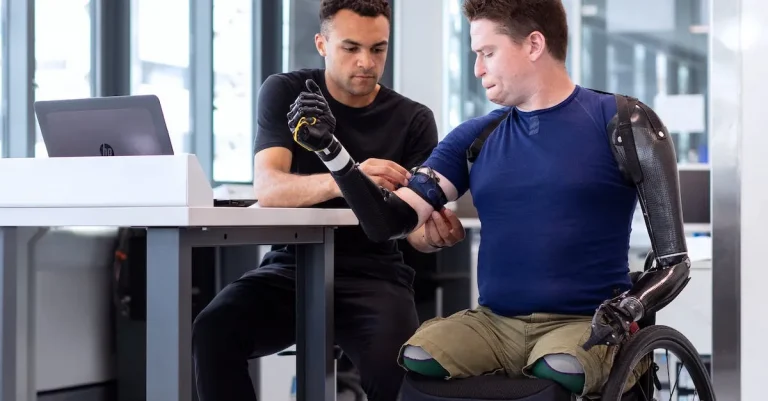Mit’S Introduction To Computer Science Course: An In-Depth Overview
For aspiring computer scientists, MIT’s Introduction to Computer Science and Programming course provides a foundational gateway into this dynamic field. Widely known as 6.00.1x, this course draws tens of thousands of learners on edX eager to master computational thinking.
If you’re short on time, here’s a quick overview: MIT’s intro computer science course 6.00.1x teaches Python programming, computational thinking, algorithms, data science, and more through video lectures, coding exercises, quizzes, and programming assignments.
This guide provides an in-depth look at 6.00.1x’s curriculum, structure, workload, and tips for succeeding in MIT’s intro CS course.
About MIT’s Intro to Computer Science Course
MIT’s Introduction to Computer Science course is a highly regarded program that provides students with a comprehensive understanding of the fundamental concepts and principles of computer science. This course serves as an excellent starting point for individuals interested in pursuing a career in the field of computer science.
History and Background
The Introduction to Computer Science course at MIT has a rich history and has been offered for several decades. It was initially developed to meet the growing demand for computer science education and to equip students with the necessary skills to excel in this rapidly evolving field.
Over the years, the course has undergone numerous updates and enhancements to keep up with the latest advancements. Today, it continues to be a cornerstone of MIT’s curriculum and is widely recognized as one of the best introductory computer science courses in the world.
Course Format
The course is designed to provide students with a strong foundation in computer science through a combination of lectures, assignments, and hands-on programming exercises. It covers a wide range of topics, including algorithms, data structures, programming languages, and computer systems.
Students enrolled in the course have access to a wealth of resources, including lecture notes, video lectures, and interactive programming exercises. They also have the opportunity to engage in online discussions with their peers and receive guidance and feedback from the teaching staff.
MIT’s Introduction to Computer Science course follows a rigorous schedule, typically spanning a full semester. Students are expected to dedicate a significant amount of time and effort to successfully complete the course and gain a solid understanding of the material.
Teaching Team
The teaching team for the Introduction to Computer Science course at MIT is comprised of experienced professors and instructors who are experts in their respective fields. They bring a wealth of knowledge and industry experience to the classroom, ensuring that students receive a high-quality education.
The teaching team is committed to providing students with a supportive learning environment and offers regular office hours and additional resources to help students succeed. They are passionate about computer science education and strive to inspire and motivate students to explore the fascinating world of computing.
For more information about MIT’s Introduction to Computer Science course, you can visit the official MIT OpenCourseWare website.
6.00.1x Curriculum and Topics
The 6.00.1x course offered by MIT is a comprehensive introduction to computer science. It covers a wide range of topics that are essential for anyone interested in pursuing a career in this field. Let’s take a closer look at the curriculum and the key topics covered in this course.
Programming in Python
One of the fundamental aspects of the 6.00.1x course is learning how to program in Python. Python is a popular and versatile programming language known for its simplicity and readability. Throughout the course, students will gain a solid foundation in Python programming, learning about variables, data types, control structures, functions, and more.
They will also have the opportunity to work on hands-on coding exercises and projects to apply their knowledge.
Computational Thinking
Another important part of the course is developing computational thinking skills. Computational thinking involves approaching problems in a way that a computer can understand and solve them. Students will learn how to break down complex problems into smaller, more manageable parts, and then develop algorithms to solve them.
They will also explore the concept of abstraction and learn how to design efficient and scalable solutions.
Algorithms
In the 6.00.1x course, students will dive deep into the world of algorithms. They will learn about different types of algorithms, such as sorting algorithms, searching algorithms, and graph algorithms.
They will also study algorithm analysis, understanding how to evaluate the efficiency and performance of different algorithms. The course will provide them with the necessary tools and techniques to design and implement efficient algorithms for various computational problems.
Data Science
Data science is a rapidly growing field that involves extracting insights and knowledge from large datasets. In this course, students will be introduced to the basics of data science. They will learn how to work with data structures such as lists, dictionaries, and tuples in Python.
They will also explore data visualization techniques to effectively present and communicate data. Additionally, students will gain an understanding of statistical concepts and learn how to apply them to analyze and interpret data.
The 6.00.1x course offered by MIT covers a wide range of topics that are essential for anyone looking to develop a strong foundation in computer science. Through hands-on coding exercises, projects, and engaging lectures, students will gain the necessary skills and knowledge to tackle real-world problems in the field of computer science.
Course Workload and Grading
MIT’s Introduction to Computer Science course is known for its rigorous curriculum and challenging workload. Students can expect to spend a significant amount of time on coursework and assignments throughout the semester.
The course is designed to provide a comprehensive understanding of computer science principles and programming concepts, and therefore requires a substantial commitment from students.
Video Lectures
The course includes a series of video lectures that cover a wide range of topics in computer science. These lectures are delivered by experienced professors and industry experts, providing students with valuable insights and knowledge.
The videos are typically engaging and informative, making it easier for students to grasp complex concepts.
Reading Assignments
In addition to the video lectures, students are assigned various reading materials to supplement their learning. These readings may include textbooks, research papers, and articles from reputable sources.
The reading assignments help students deepen their understanding of the subject matter and provide additional context to the topics discussed in the lectures.
Problem Sets
Problem sets are a crucial component of the course and require students to apply the knowledge they have gained to solve practical programming problems. These problem sets often involve writing code, debugging, and problem-solving.
They are designed to challenge students and encourage them to think critically and creatively.
Quizzes
Throughout the course, students are given regular quizzes to assess their understanding of the material. These quizzes are typically short and cover the key concepts discussed in the lectures and readings.
They provide an opportunity for students to gauge their progress and identify areas where they may need additional study or clarification.
Final Exam
The course culminates in a comprehensive final exam that tests students’ knowledge of the entire curriculum. The exam is designed to be challenging and covers a wide range of topics. It serves as a way for students to demonstrate their understanding of computer science principles and their ability to apply them to real-world scenarios.
It’s important for students to manage their time effectively and stay organized throughout the course to successfully complete the workload and achieve a satisfactory grade.
Tips for Succeeding in 6.00.1x
Take Thorough Notes
Taking thorough notes is crucial for succeeding in any course, and 6.00.1x is no exception. As you go through the lectures and complete the assignments, be sure to jot down important concepts, algorithms, and code snippets.
These notes will serve as a valuable reference when you are studying for exams or working on projects. Additionally, reviewing your notes regularly will help reinforce your understanding of the material.
Leverage Discussion Forums
One of the key features of 6.00.1x is the online discussion forums. These forums provide an opportunity to interact with fellow learners and ask questions about the course material. Don’t hesitate to post your doubts or share your insights.
Often, other learners may have similar questions or can provide helpful explanations. Engaging in discussions can enhance your understanding of the concepts and promote collaborative learning.
Start Assignments Early
The assignments in 6.00.1x are designed to reinforce the concepts taught in the lectures. To ensure success, it is important to start the assignments early and give yourself enough time to complete them.
Rushing through the assignments at the last minute can lead to mistakes and hinder your learning progress. By starting early, you can pace yourself, seek help if needed, and produce higher quality work.
Form a Study Group
Studying in a group can be highly beneficial when it comes to tackling challenging coursework like 6.00.1x. Forming a study group with classmates or fellow learners can provide a supportive environment for discussing difficult concepts, solving problems, and sharing resources.
Collaborating with others can also help you gain different perspectives and learn from their approaches. Remember, teamwork makes the learning experience more enjoyable and effective.
Conclusion
MIT’s Introduction to Computer Science and Programming lays a robust foundation for further study in computing and coding. Through engaging video lectures, hands-on assignments, and a supportive community, this course empowers novice programmers to develop computational thinking skills and Python proficiency.
By staying organized, tapping campus resources, collaborating with peers, and practicing effective computer science learning strategies, you can thrive in MIT’s introductory CS course. The skills you gain in 6.00.1x will equip you for continued success in computer science at MIT and beyond.







